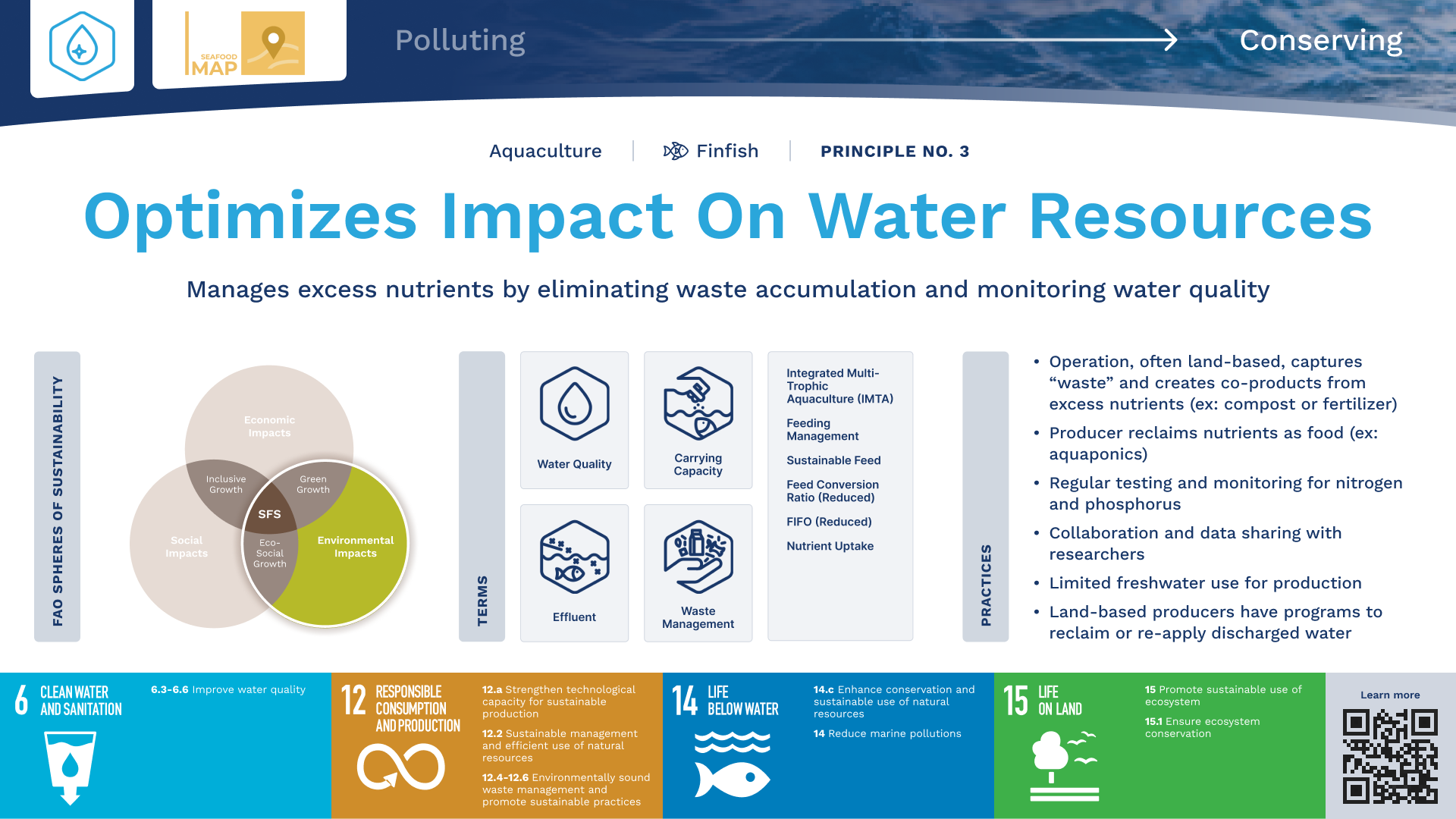Aquaculture – Principle 3 | Seafood MAP

China Blue Sustainability Institute
Key Topics Explained
How can aquaculture help preserve ecosystems and address food system challenges?
There are two major inputs in the production process of aquaculture. One is feed input. For intensive aquaculture, after a large amount of feed is applied to pond, due to the limited absorption of these feed by fish, 70%-80% of the nutrients will be dissolved in the water or sink, then absorbed by the soil at the bottom of pond. This will increase the nutrient level of the farm water and soil. The soil at the bottom of the pond is in an anaerobic environment for a long time, which will produce a large amount of harmful substances such as hydrogen sulfide, ammonia nitrogen and nitrite. If such water is directly discharged into the surrounding environment, it will cause hypoxia in the water body and fish will be poisoned. The second is the input of fishery medicines, especially antibiotics. In order to control and prevent diseases, more antibiotics will be used in the production process of aquaculture. Antibiotics and their metabolites will stay within the water and the soil of the pond, resulting in chemical residues. This may affect the microbial flora of water bodies and soils.

N/A